With over 25 years of experience in design and architecture and having established his own architecture firm, Indonesian collector Cosmas Gozali’s life and profession is all intertwined with creativity and art. Art is not only the starting point but also the path; or like he puts it, “art is food to my soul.” His collection of over 800 artworks is heavily focused on emerging artists from Indonesia or Southeast Asia. As a board member of the Mitra Museum Jakarta and a patron of Art Jakarta art fair, he is an active player and catalyst for the local and regional art scene.
Cosmas Gozali explained to LARRY’S LIST why art is like food to his soul; why is it important for him to share his art collection with his colleagues in his architecture firm; why he is most interested in emerging artists; among other topics. Interested to explore or collect Indonesian art? Don’t miss out his advice at the end.
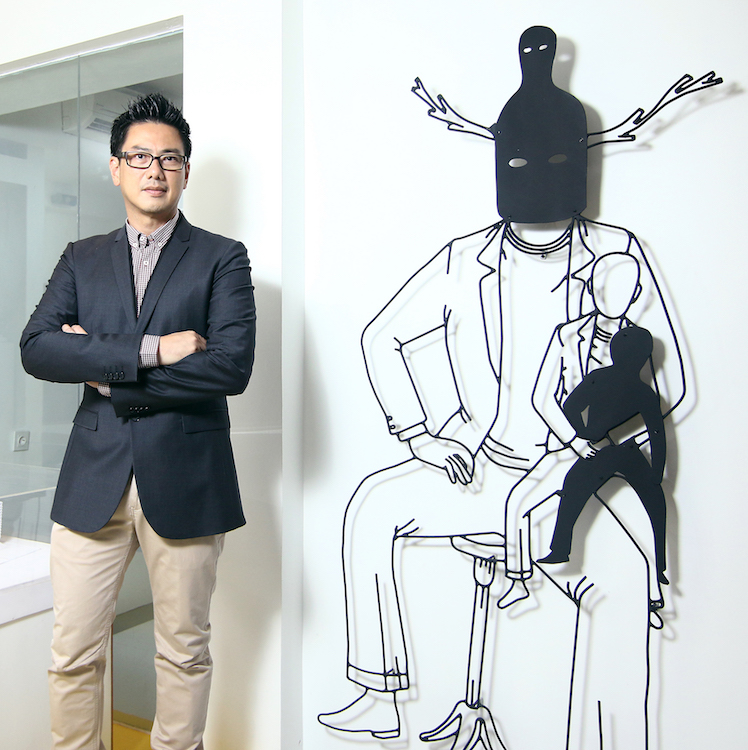
What made you started collecting art?
It started when I was studying architecture in the 2nd year in TU Wien, Austria, when I had to learn about Art History. I read about Gauguin, Matisse, Picasso, and so many other artist, and I did not see it as learning materials, but something that made me happy and is very enjoyable, then I realized that I was in love with art. I also love art because I like to see the interpretation of human beings, socio-economics, and culture in the various ways they are being expressed. I appreciate the many ways artists express their thoughts, aspirations, or feelings through art.
What is the main motivation to collect arts?
It brings me joy, and it balances my soul and mind. Art makes me calm, but also trigger my creativity, and as an architect, I need to be creative all the time. Art also makes me learn a lot about human beings and their times, as well as how the world changes and develops.
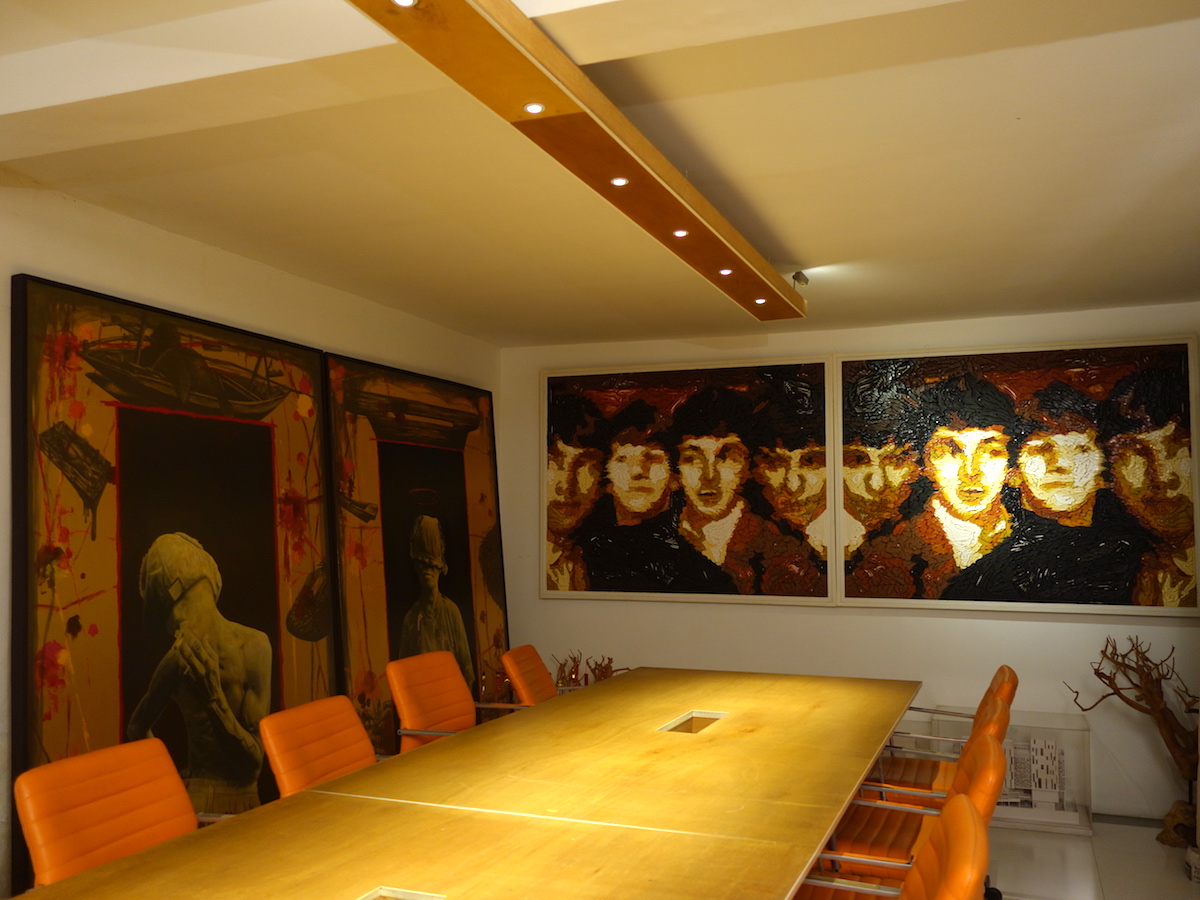
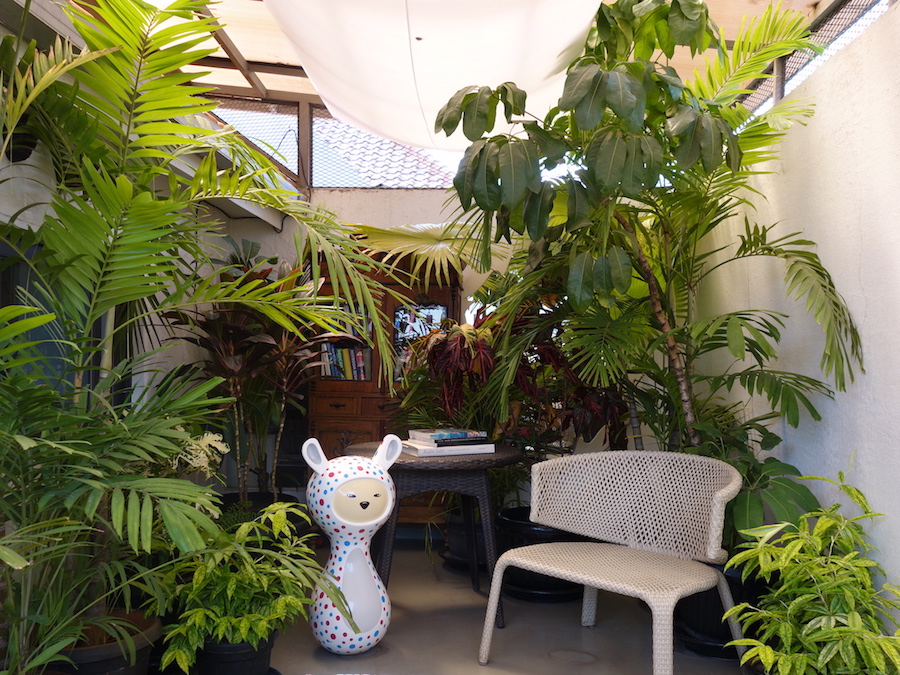
Why is it important for you to focus on emerging artists in your collection?
They are less experienced and naïve; they are spontaneous and experimental; their works are more a reflection of their life experiences. Freedom, technology and changes in the value of life, make their work more interesting. They are still struggling and need more financial supports to create more art, that’s why most of the artworks become unique. By supporting them, I will help them grow and motivate them to create even better pieces. And with the same amount of budget, I can support more emerging artists then established ones.
Is there any particular type of art that has consistently attracted you?
Not any particular type… I like to find new ones, new movements, stay open-minded to new kinds of art; I do not limit myself to a particular of art or style. I like to see how artists develop themselves through time. And of course the art has to connect with me, to trigger my curiosity and boost my excitement.
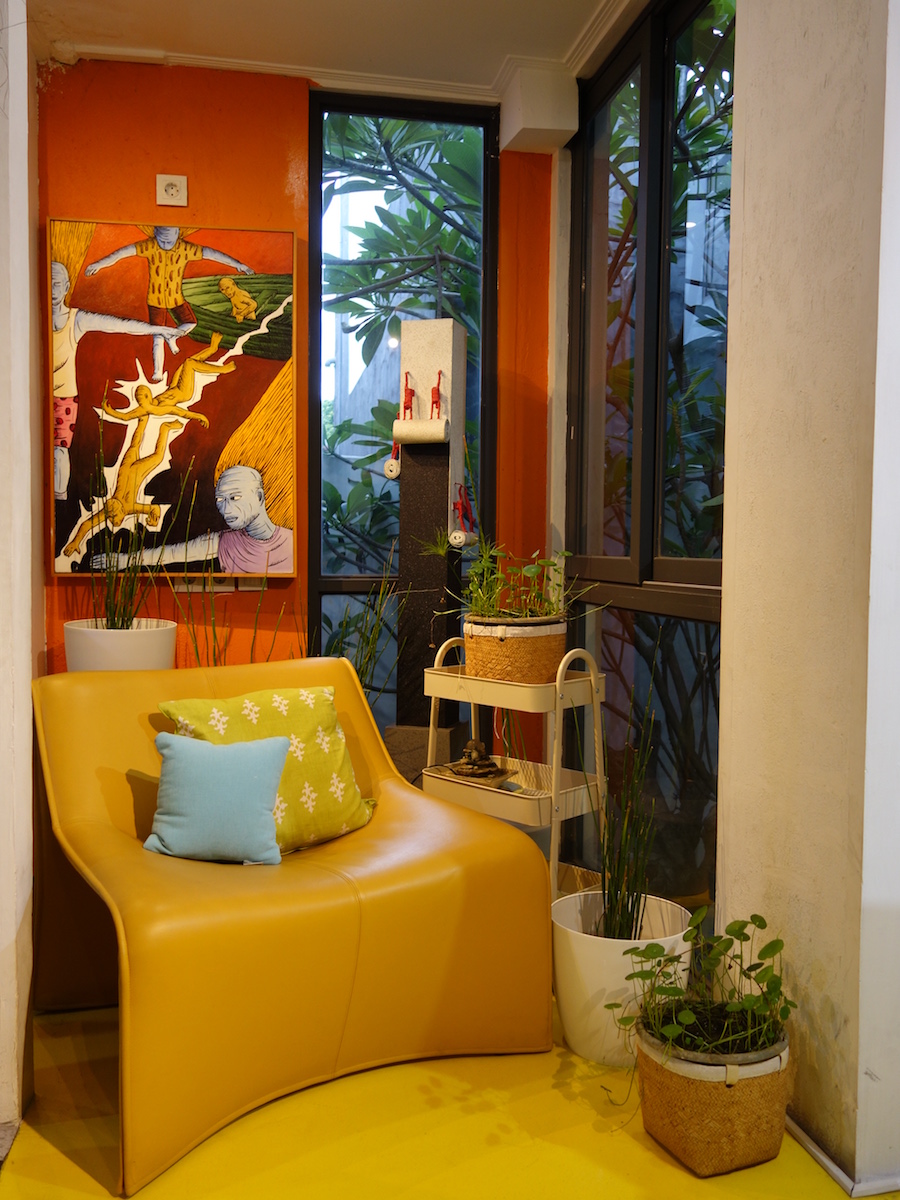
What was the first artwork and purchase?
When I went to Bali many years ago when I was still a university student, I saw a painting in a gallery with a simple depiction of Balinese women going to the market by a painter from West Sumatra. The painting was very notable to me that I kept thinking about it at night and led me to get it the next day. I still keep and like that painting.
The last artwork I purchased— early this year, from one of the finalists of the UOB Painting of the Year.
How many artworks do you have?
I do have more the 800 pieces of art, and most of them are still in the storage because I don’t have enough space to display them. But some are displayed in my houses in Jakarta and Singapore, also in my office in Jakarta.
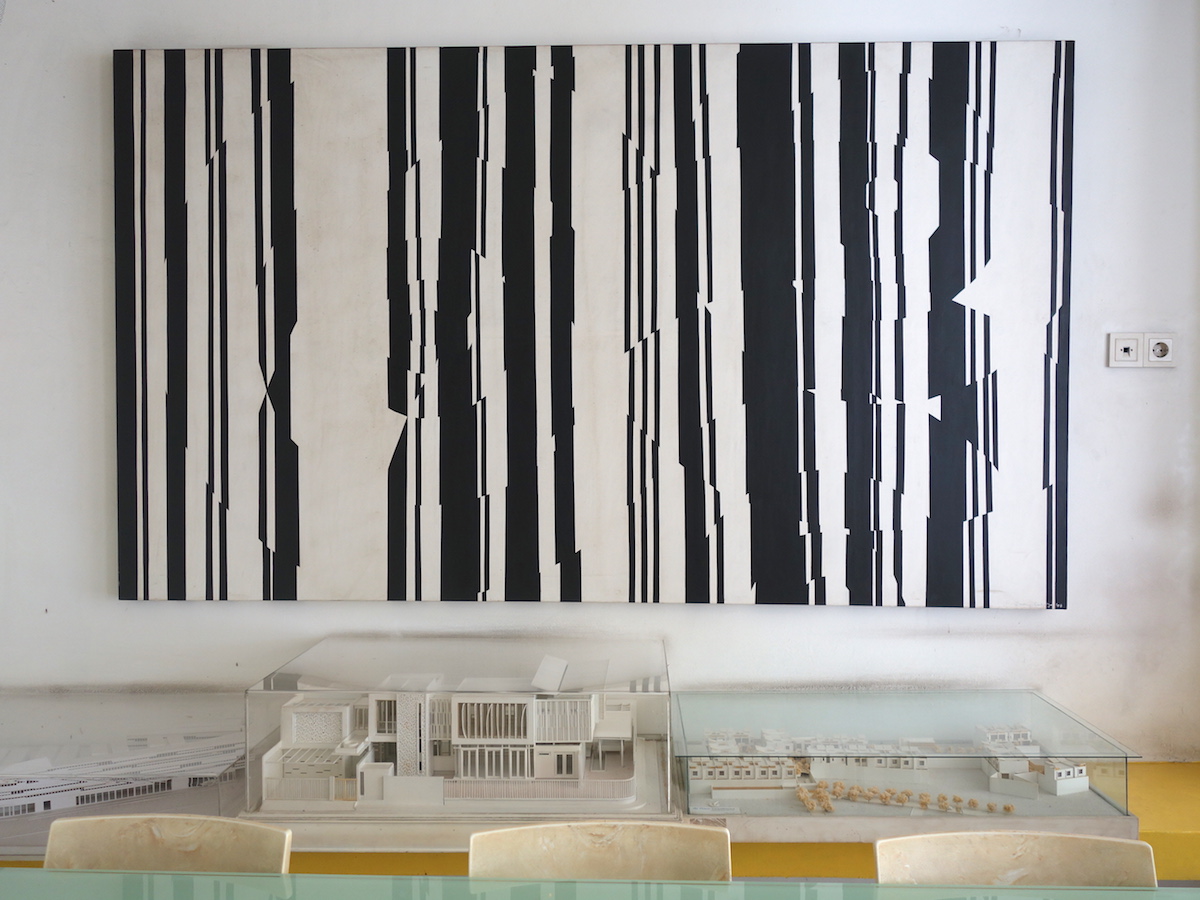
Why do you want to show your collection in you architecture firm? What do your colleagues think about art?
Architecture and art are connected and influencing each other. This will also show that architects are not just technical professional, but also those with creativity. I want to instil arts in my colleagues, so they will become more creative as they see various artworks at the office. I also take time to share with them the backgrounds of the artworks at the office: how they were created, what are their unique qualities, etc. In the creative industry like architecture, it is important that we have an open mind and abundant ideas, and the inspirations and learning can come from artworks and appreciating art. We can learn through art about composition, colours, and form, or conceptual ideas that others or the artists have studied, it will help us to work faster and more smartly.
Would you wish to present your art collection publicly in your private museum? Why?
I am open to that as it is good to share with others and allow others to learn about the story or history of art. Good art should not be kept only for ourselves, but should be shared with others; by doing so, it will help the artist get recognized by the public and also will help them become more eager to develop themselves. The public will get more information and knowledge about art, and will create more interest and also new, young art lovers or art collectors. Then, the art scene will grow and develop.
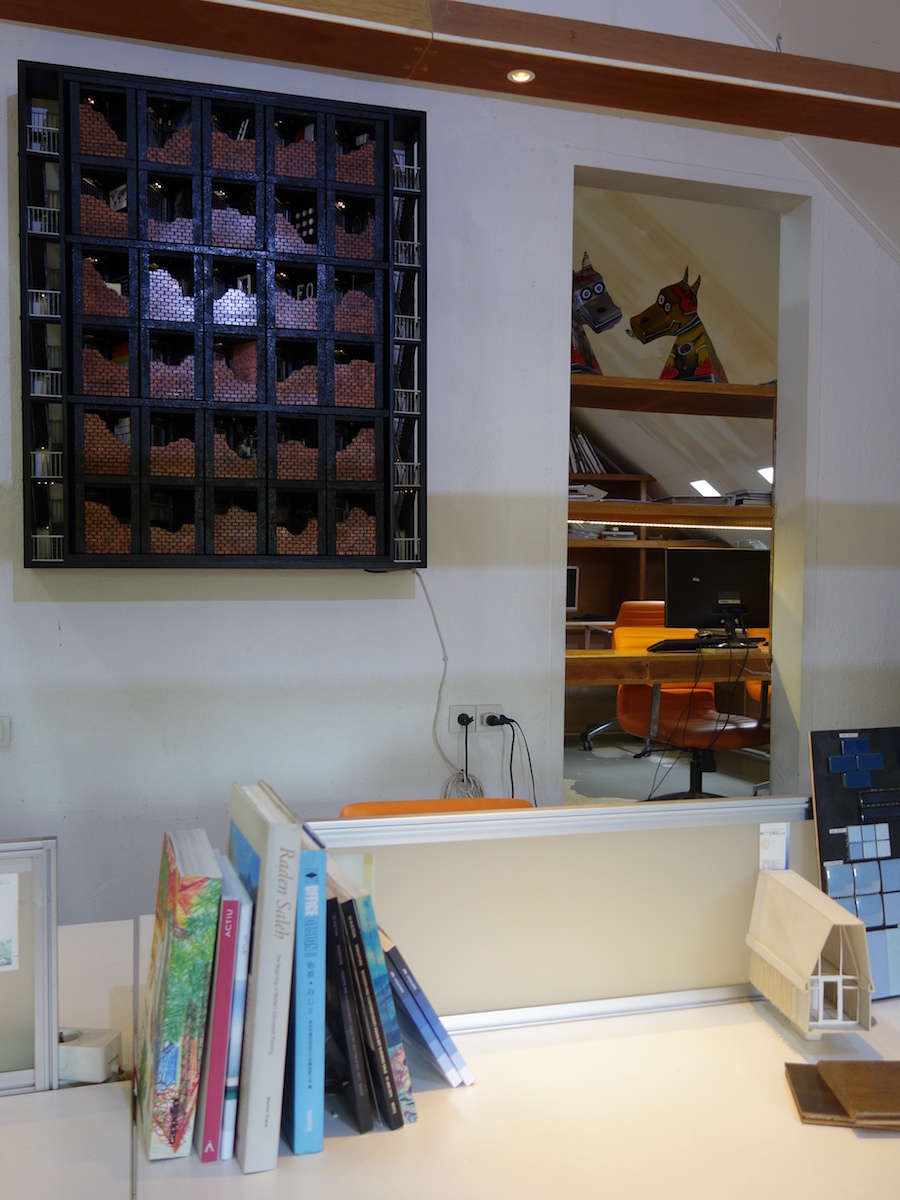
What consideration guides you to make a purchase?
The most important consideration is that it has to be an interesting piece, having the unique concept and techniques, something that I haven’t had in my collection and will enhance the value of my collection. The other consideration is also the reasonable and affordable price, that you will never regret and suffer after the purchase, and by purchasing it, the artist will have the opportunity to develop themselves for better future.
What is your most treasured artworks?
It is not easy to answer this. Treasure doesn’t always equal to dollar value. Most treasured are those that I feel more attachment or more meaningful like for example the first painting I got. As a student and didn’t have much money, getting a piece of artwork was a big thing for me. Or something that has a big meaning in my life. But surely for some good artworks were very affordable when first I bought them because not many were interested in that, but after certain period, they become high in value, like works from Nyoman Masriadi, Jumaldi Alfi, or Mark Justiniani, and many others.
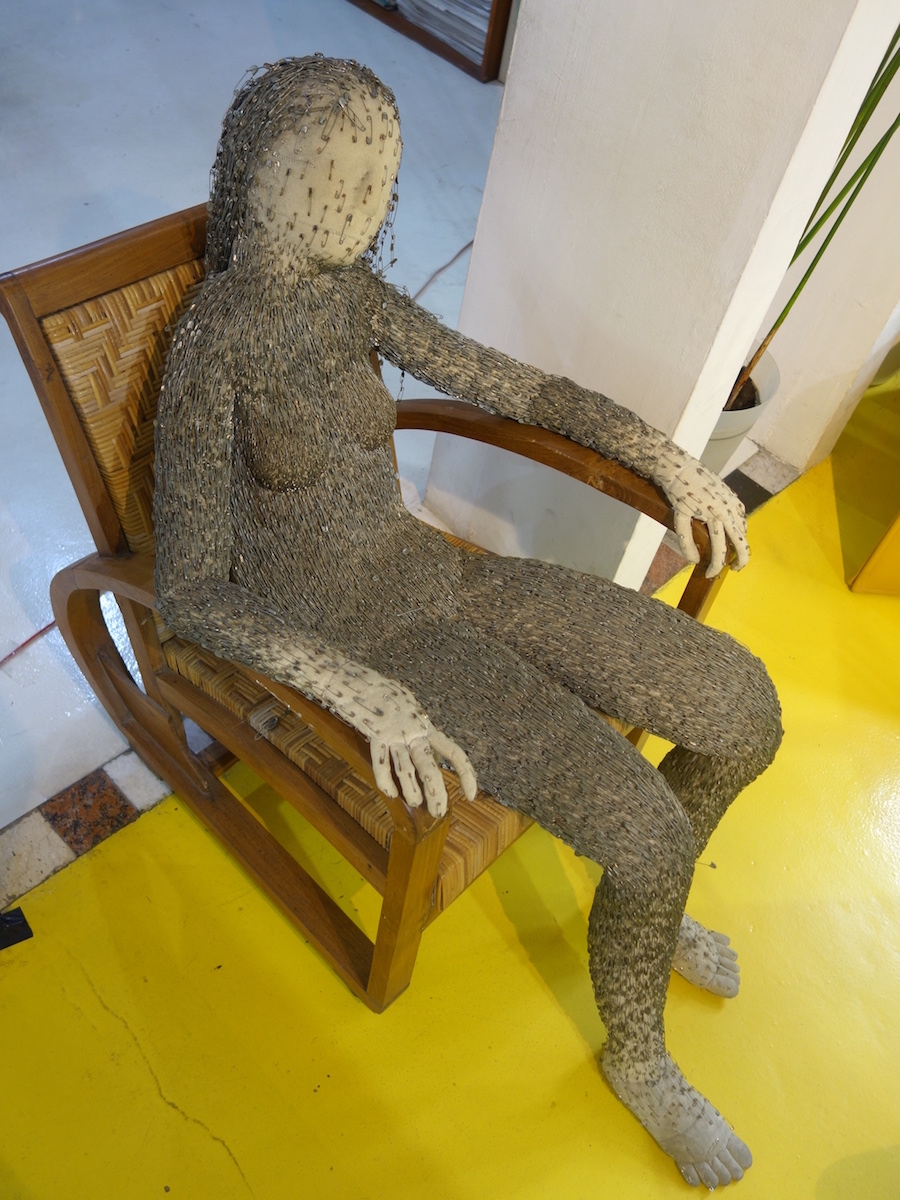
How do you usually discover young and emerging artists? How has it changed when you cannot travel or visit venues as much as before?
I am very active in the art community and regularly visit art fairs and art exhibitions; by being there, I can meet a lot of people while seeing a lot of artworks. I will be introduced to young artists, or they will approach me during the fairs. Gallery owners and managers will also send me emails or WhatsApp messages regarding the artists and artworks— these keep me always updated with the current situation. When the time changed, where we cannot travel anymore, it does not stop the activity in the art world. There are online art fairs, and relations with the galleries still continue via the online system. Social media, like Instagram, also helps a lot to follow the art scene. A lot of young artists followed me and vice versa, and I can communicate with them even though we don’t meet in person. All this information on website or Google will help us stay connected. But of course seeing the art directly and talking with the artist in person will be better, but internet technology help solve some problems in certain ways.
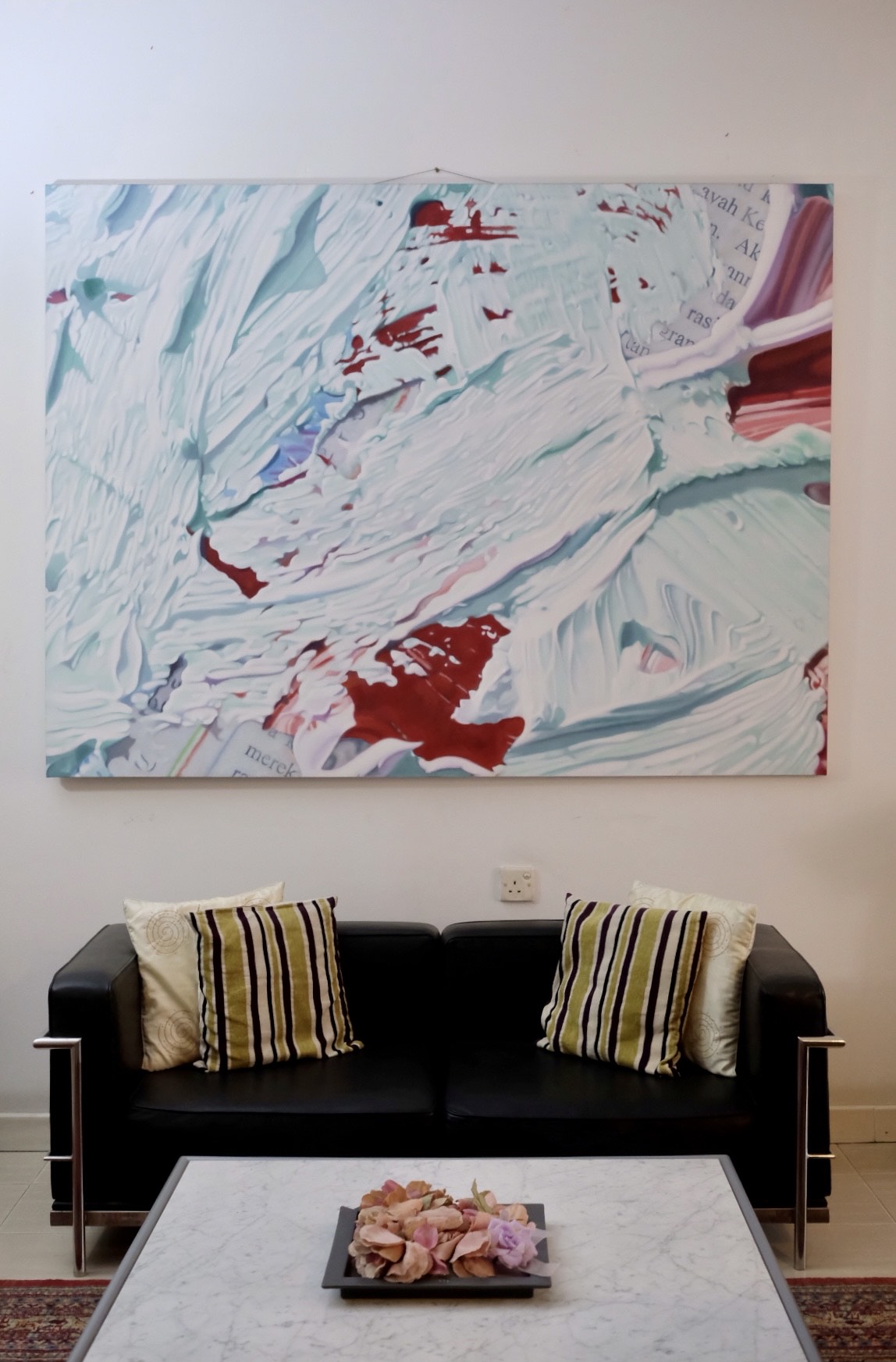
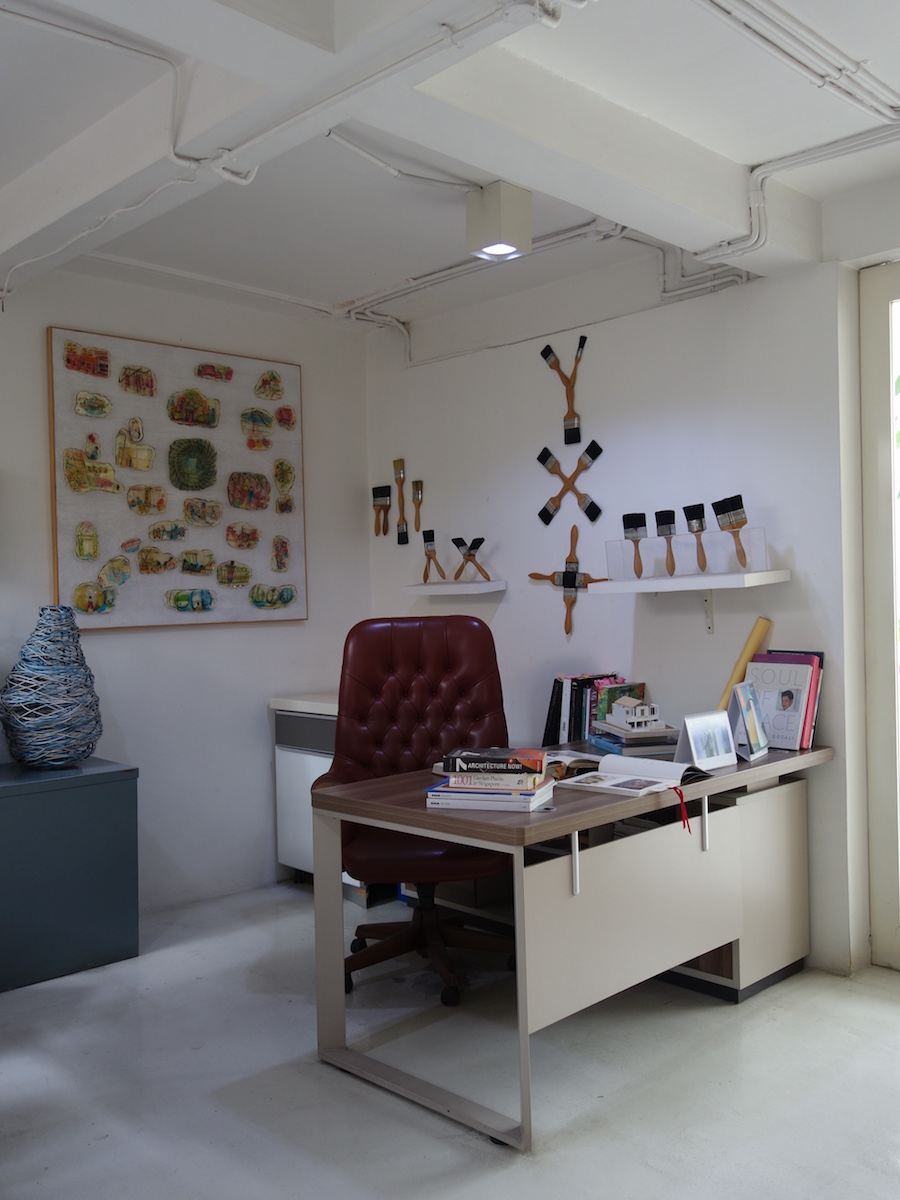
What was your happiest moment being involved in art?
Art always makes me happy. It is like food to my soul. Art critique, visiting galleries, art installations are those things which make me truly happy. Learning what people have in mind or their life experiences through art helps me understand more about humans and the world. And collecting and purchasing art can change artists’ or people’s life to become better, to convince others to start loving and collecting art, these are the moments that make me happy. I do also create art installations which I really relish as I can really have the freedom to express myself and expand my creativity. Being appreciated by others and having the opportunity to exhibit it around the world— as I was invited to exhibit my art installation in MAXXI Museum, Rome, Italy, or in Salone del Mobile (Milan Furniture Fair) and in Manila—these were the greatest moments in my life. As I said before, doing art keeps my soul alive.
Why has art become important in your life?
As I said, art is food to my soul. When I was young, I used to paint as well. As I got busier with my studies, I don’t paint anymore. I felt relax and peaceful when I was painting. Then, I started going to galleries and realized that by collecting art, I can also be happy.
From art, I learn and expand my knowledge by viewing other people’s views through the artworks.
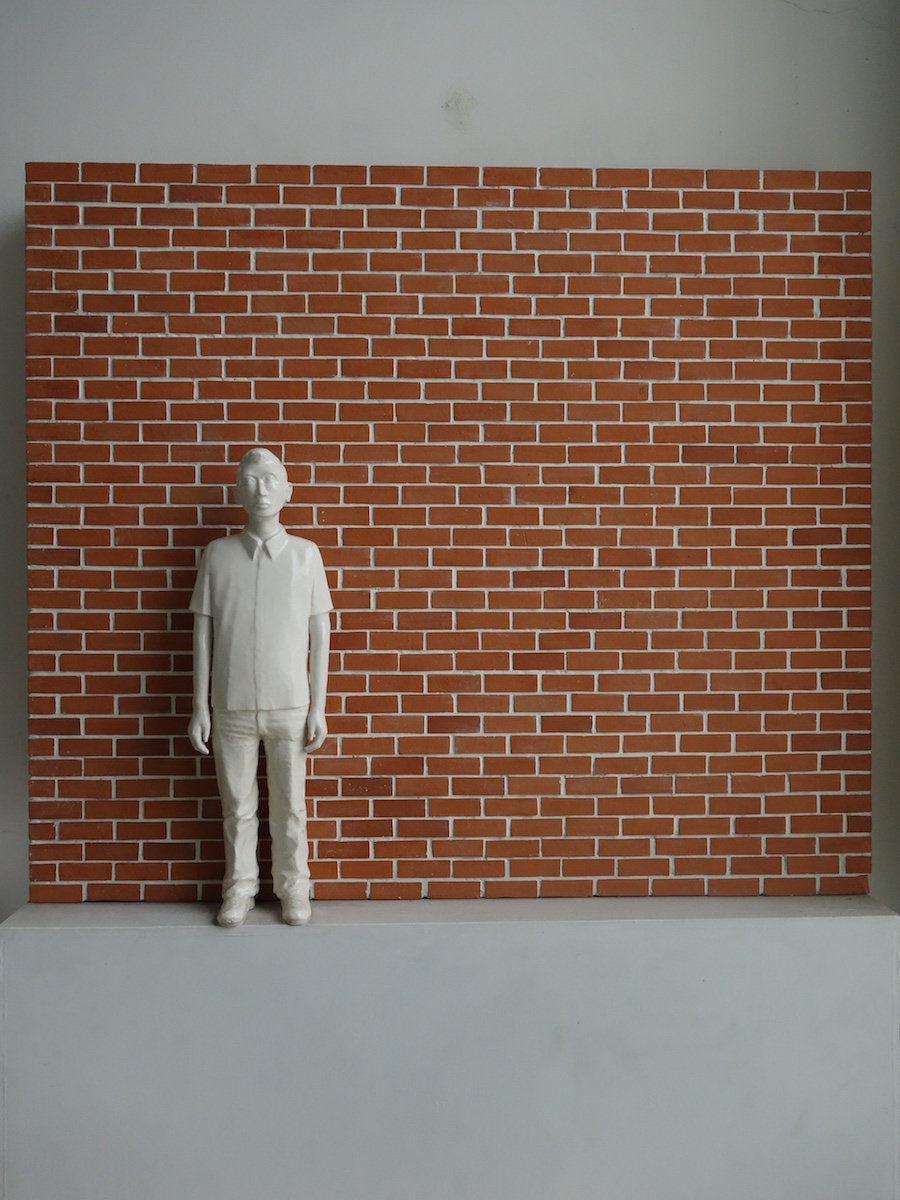
How do your two passions, architecture and art interact with each other?
They are like a couple, they need each other. Architecture is being influenced by art, and vice versa, like Wassily Kandinsky, Kazimir Malevich’s pieces of deconstructive architecture, or Walter Gropius in Bauhaus, and Gerrit Rietveld with the Mondrian and Cubism architecture.
How do you engage yourself in the local and regional art scene?
I am a board member of the Mitra Museum Jakarta, whereby we support various museums in Jakarta through exhibitions, renovations, and general advisory. We run programmes and fundraisers to help local artists and museums, in the hope of keeping the local culture and art scene alive. Beyond that, together with other art collectors, we founded One Piece Club Indonesia, a club originating from Japan, to create a market for local living artists among art collectors in Indonesia. Every year, we will exhibit a group show of artworks which we have individually acquired. As a member of One Piece Club, you will be joining a circle of art enthusiasts who wish to learn more about art while encouraging the creation of art. Being one of the patrons for Art Jakarta, I will help promote the art fair to the young collectors. I also used to own an art gallery in Singapore to promote young Indonesian artists, whereby we brought the art to various exhibitions in Italy and Germany. My love for art has also brought me to many art fairs across the globe, and I used to be a curator and director at one of the auction houses in Singapore.
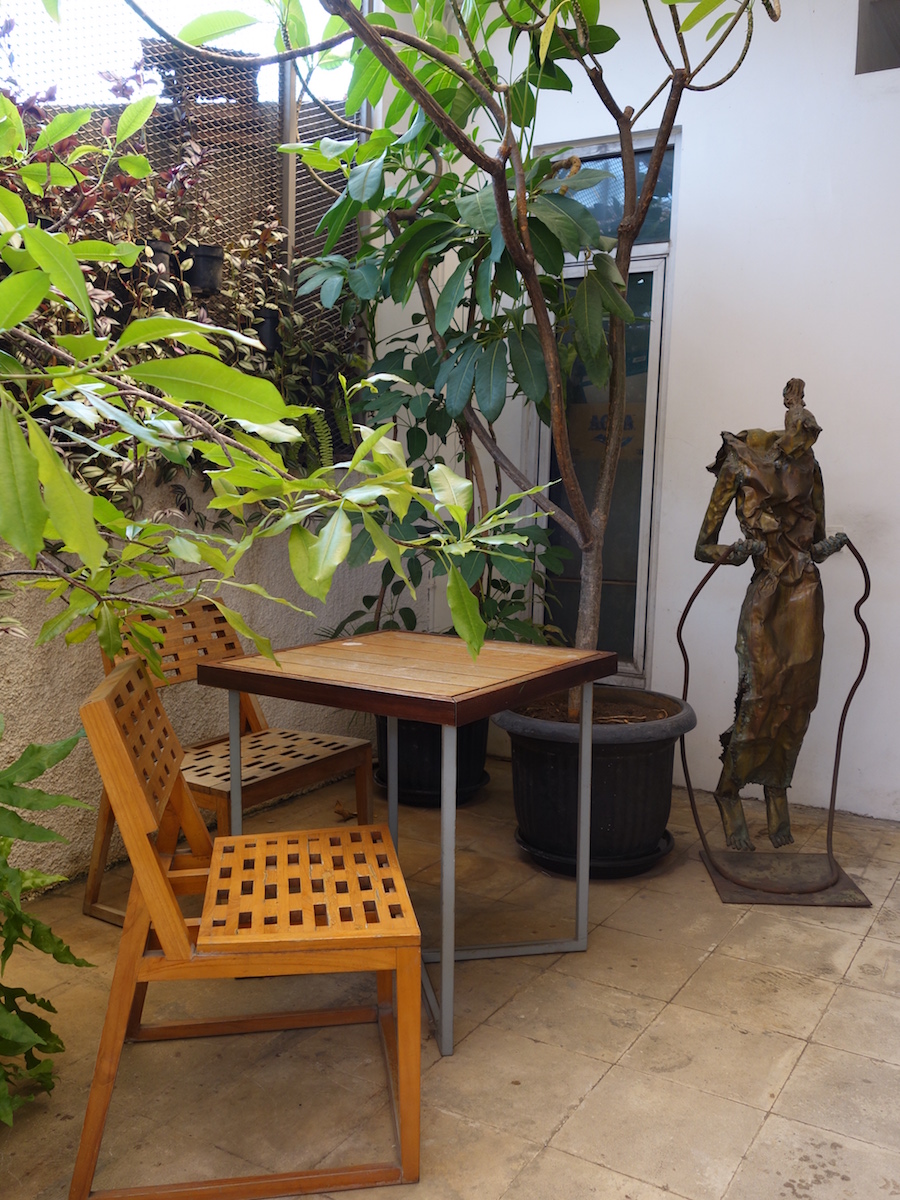
What is your advice to collectors who are interested to explore or collect Indonesian contemporary art?
Don’t limit yourself to only art that you are used to liking. Be open-minded to art that falls outside of your comfort zone. Understand each artist’s portfolio to understand which artists are emerging. Go to local art fairs, like Art Jakarta, and many others, also to galleries and art exhibitions, and meet, mingle with and also keep contact with other art collectors whom you can exchange ideas with. Make use of these opportunities in this day and age— find information on websites or Google, do the “homework”.
Can you name three emerging Indonesia artists who should be on our radar?
Meliantha Muliawan, Widi Pangestu Sugiono, and Bunga Yuridespita, just to name a few, are some of the few up-and-coming artists, whom I love and whose work I have been collecting since the very beginning.
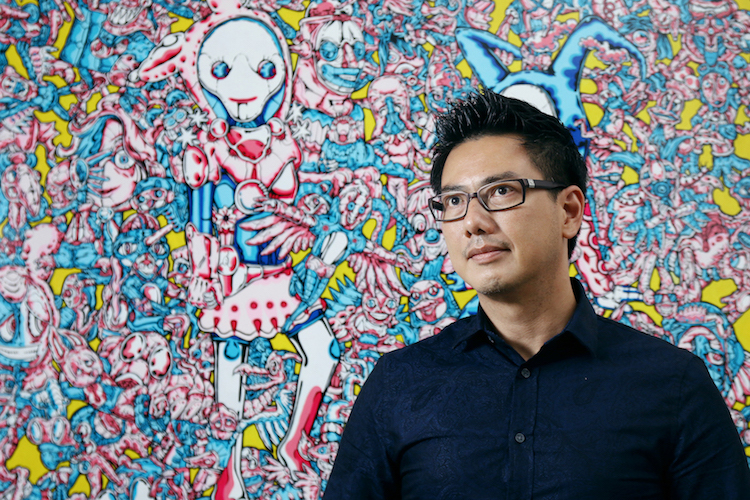
Related: atelier Cosmas gozali
Instagram: @cosmasgozali
A selection of artists Cosmas collects:
Aditya Novali
Gede Mahendra Yasa
Maria Indra Sari
Nyoman Masriadi
Popok Tri Wahyudi
This interview was facilitated by Art Jakarta (Art Jakarta Virtual 2020 phase 2, 16 December 2020 – 15 February 2021).
By Ricko Leung





